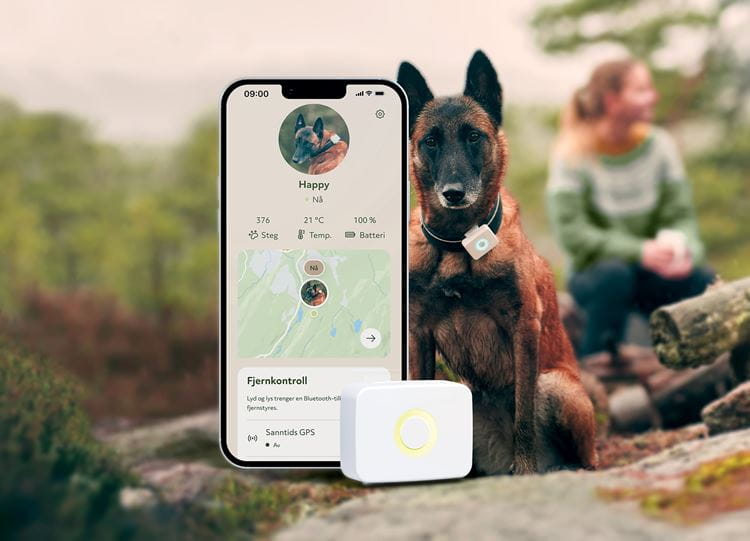Wearables
Let us help you build a wearable that will stand out in the health and fitness market

Nordic Semiconductor today announces that Trondheim, Norway-based technology company, Lilbit®, has selected Nordic’s nRF9160 low power SiP with integrated LTE-M/NB-IoT modem and GPS in combination with the nRF52811 Bluetooth® 5.2/Bluetooth LE) multiprotocol System-on-Chip (SoC) to provide the core processing power and wireless connectivity for its ‘Lilbit’ pet tracker.
The small and lightweight device is designed to attach to the collar of a pet, and once paired to a smartphone using Bluetooth LE wireless connectivity provided by the nRF52811 SoC, ensures an easy way to monitor and record their location and movements. If the dog or cat moves beyond Bluetooth LE range, the device can detect and report the animal’s position using LTE-M/NB-IoT cellular connectivity and GPS trilateration enabled by the nRF9160 SiP. The nRF9160 SiP is certified for global cellular IoT applications, and comprises a dedicated application processor and memory, multimode LTE-M modem with integrated RF front end (RFFE), and power management, all in a compact 10 by 16 by 1 mm package.
The Lilbit device’s integrated inertial measurement unit (IMU)—with accelerometer, magnetometer and gyroscope—records the animal’s different movements and, with the support of proprietary machine learning (ML) algorithms, can over time associate these movements with particular behaviors and health issues. The combination of the nRF9160’s 64 MHz Arm® Cortex®-M33 application processor, and the nRF52811 SoC’s 64 MHz, 32-bit Arm® Cortex® M4 processor, provides Lilbit with the processing power to comfortably handle these complex and processor-intensive computations. The nRF9160’s Arm Cortex-M33 processor includes 1 MB Flash and 256 KB RAM, a range of analog and digital peripherals, automated power and clock management, Arm TrustZone® for trusted execution, and Arm CryptoCell™ 310 for application layer security.

From the iOS and Android ‘Lildog®’ or ‘Lilcat®’ smartphone app, the owner can track the pet’s location and location history, but also review the animal’s activity data (for example steps taken), as well as its current temperature, behaviors, and potential health issues.
The device employs a 500mAh Li-Poly battery, which can last up to six days between charges in normal operation, thanks in part to the ultra low power characteristics of the Nordic solutions. The nRF9160 SiP is optimized for low power operation, supporting both PSM and eDRX power saving modes, which enable it to sleep for longer periods of time. For both LTE-M and NB-IoT the PSM floor current is as low as 2.7µA, and with an eDRX interval of 655 seconds the average current is 6µA for LTE-M and 9µA for NB-IoT. With the modem switched off the current is 2.2µA.
Nordic’s nRF52811 multiprotocol SoC is a fully-featured connectivity solution that supports Bluetooth 5.1 Direction Finding, in addition to all the features of Bluetooth 5. The nRF Connect SDK is recommended for nRF52811 software development. The nRF Connect SDK integrates the Zephyr RTOS, supports applications using Bluetooth LE, Bluetooth mesh and Thread, and includes examples, Bluetooth LE profiles and driver support for all peripherals.
“We chose the nRF9160 SiP and nRF52811 SoC because Nordic Semiconductor is the leading supplier of low power radio solutions in the world with an impressive track record,” says Morten Sæthre, CEO of Lilbit. “The nRF9160’s Arm processor made it possible to integrate our advanced machine learning functionality while Nordic’s comprehensive development environment and nRF Connect SDK enabled us to focus on our application code and use of sensors rather than the RF firmware.”
Let us help you build a wearable that will stand out in the health and fitness market